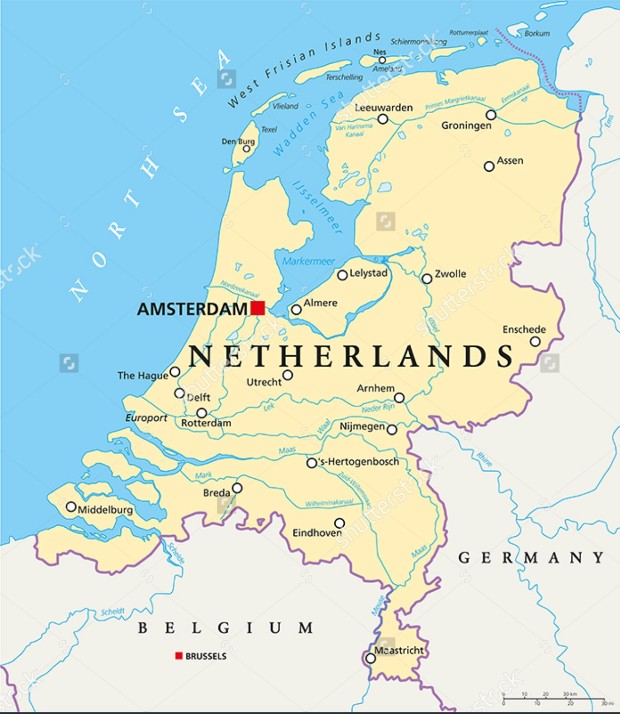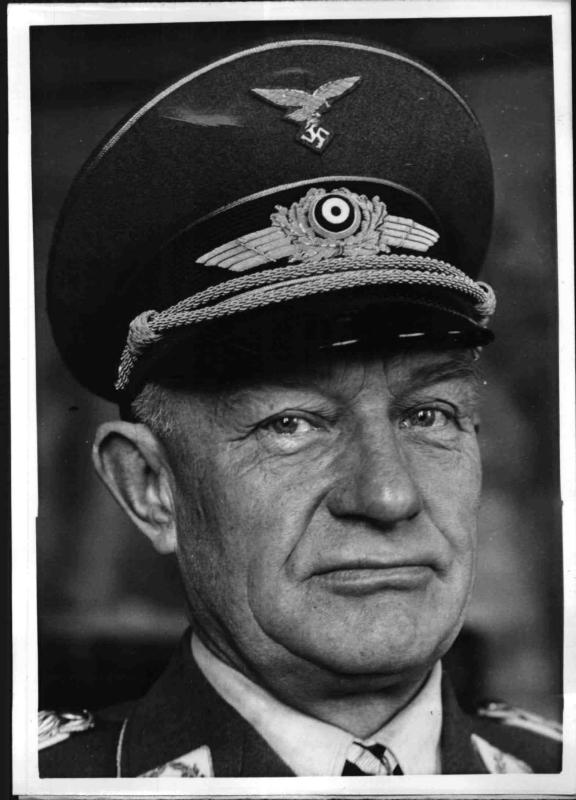
The above picture is not a picture of a child in Sub Saharan Africa but it is in fact a picture of a child in the Netherlands in 1944/45.
The Netherlands is a country divided by rivers and in the winter 44/45 ,what side of the river you were would determine whether you would have food or not.

The Dutch famine of 1944, known as the Hongerwinter (“Hunger winter”) in Dutch, was a famine that took place in the German-occupied part of the Netherlands, especially in the densely populated western provinces north of the great rivers, during the winter of 1944–45, near the end of World War II. A German blockade cut off food and fuel shipments from farm areas. Some 4.5 million were affected and survived because of soup kitchens. As many as 22,000 may have died because of the famine. Most of the victims were reported to be elderly men.
Towards the end of World War II, food supplies became increasingly scarce in the Netherlands. After the landing of the Allied Forces on D-Day, conditions grew increasingly worse in the Nazi-occupied Netherlands. The Allies were able to liberate the southern part of the country, but their liberation efforts came to an abrupt halt when Operation Market Garden, their attempt to gain control of the bridge across the Rhine at Arnhem, failed. The seizure of the approaches to the port of Antwerp (the Battle of the Scheldt) was delayed due to Montgomery’s preoccupation with Market Garden(a Bridge too far).

The southern provinces had already been liberated in September 1944.

After the national railways complied with the exiled Dutch government’s appeal for a railway strike starting September 1944 to further the Allied liberation efforts, the German administration (under Wehrmachtbefehlshaber Friedrich Christiansen) retaliated by placing an embargo on all food transports to the western Netherlands.

In response to the railway strike, food transports to the western Netherlands were banned. After six weeks the ban was withdrawn, but the supply remained frozen because of the dismantled railway network and the German requisitioning of goods. During the harsh winter of 1944/45, the socalled hungerwinter, there were severe food shortages in the cities.
The transport of coal from the liberated south also ceased. Gas and electricity were shut off. People chopped down trees and dismantled empty houses to get fuel. The amount of food available on ration dropped steadily.The unusually early and harsh winter had already set in. The canals froze over and became impassable for barges.
City dwellers went on hunger expeditions to the countryside. They traded their valuables with the farmers for food.

Food stocks in the cities in the western Netherlands rapidly ran out. The adult rations in cities such as Amsterdam dropped to below 1000 kilocalories (4,200 kilojoules) a day by the end of November 1944 and to 580 kilocalories in the west by the end of February 1945.Over this Hongerwinter (“Hunger winter”), a number of factors combined to cause starvation of the Dutch people: the winter itself was unusually harsh and the retreating German army destroyed docks and bridges to flood the country and impede the Allied advance. As the Netherlands became one of the main western battlefields, the widespread dislocation and destruction of the war ruined much of its agricultural land and made the transport of existing food stocks difficult.
As an alternative to onions , tulip bulbs would be used as a source of food.

Various initiatives were taken to deal with the severe food shortages. The churches of the northern and eastern Netherlands together found lodgings for 50,000 malnourished children from the cities.
At the end of January 1945, the Red Cross imported flour by ship from Sweden. It would be another month before the legendary Swedish white bread could be distributed.
A letter of commemoration given to a grocer whose shop served as a Red Cross point giving out the “Swedish bread”

In April, Allied planes dropped food parcels over the Netherlands with the permission of the Germans.

On May 2nd, Allied lorries carrying food were also allowed in. But organising a fair distribution was not easy. Most of the food could not be distributed until after the liberation.
An Amsterdam resident wrote:
‘… today again the engines of the heavy bombers could be heard over a jubilant Amsterdam, When will this food be distributed? A start has already been made on handing out the items from parcels damaged after they were dropped. For the moment, 7,000 parcels have been distributed among those suffering from hunger oedema.”
The German occupiers allowed coordinated air drops of food over German-occupied Dutch territory by the Royal Air Force and Royal Canadian Air Force from 29 April to 7 May, and by the U.S. Army Air Force from 1 to 8 May. This was Operation Manna (RAF/RCAF) and Operation Chowhound (USAF).
The Germans agreed to not shoot at the planes flying the mercy missions, and the Allies agreed not to bomb German positions. Operation Faust also trucked in food to Rhenen beginning on 2 May, utilizing 200 vehicles. Rhenen was also occupied by the Germans.
The Dutch famine of 1944 was a rare case of a famine which took place in a modern, developed and literate country, albeit one suffering under the privations of occupation and war. The well-documented experience has helped scientists to measure the effects of famine on human health.
My family had move from the northern Province Friesland to the south eastern Province Limburg a few years before the war, so they escaped the hunger winter.
The sad thing is that this famine could have been avoided. Although there were many aspects and parameters that caused the famine, the real trigger was the failed Operation Market Garden.Not only did it cause the death of 20,000 citizens it also caused the death of a great number of allied troops.


Donation
I am passionate about my site and I know you all like reading my blogs. I have been doing this at no cost and will continue to do so. All I ask is for a voluntary donation of $2, however if you are not in a position to do so I can fully understand, maybe next time then. Thank you. To donate click on the credit/debit card icon of the card you will use. If you want to donate more then $2 just add a higher number in the box left from the PayPal link. Many thanks.
$2.00



Operation Market Garden was not a liberation operation. Its objective was realizing a bridgehead between Arnhem and the IJsselmeer. Its failure has nothing to do with the famine in the western part of The Netherlands.
LikeLike
This is of course my own opinion but I believe if Market Garden would have been successful it would have ended the war months earlier and the famine would probably not have happened.
LikeLike
It’s mind blowing the amount of collaboration that was required between the Allies and Germany to try and ease the pain. I agree that this was avoidable, most modern famines are brought to us from political turmoil rather then lack of food.
LikeLiked by 1 person
My mum (sadly passed away in 2013 at the age of 77) survived the Hunger Winter in Amsterdam; her father had a vegetable plot and grew tobacco, which was exchanged for food. After the war, I believe this was around Sept 1944, she was sent to Switzerland to recuperate, being fostered by two elderly ladies. My mum told us countless stories about the journey by train, taking several days, maybe most of a week, on the way down, because of all the damage to the railways and ‘only two days’ on the way back to Amsterdam. In her later years, my mum became kind of obsessed by what had happened in Amsterdam in the War years, particularly the (Jewish) neighbours that ‘disappeared’ (died in the camps). We must continue to write about what happened during Nazism so that the memory lives on; thank you for your blog!
LikeLike
I was born July 14 1945 in Holland. But suffering from bad bones and a lot of denntal issues. But thank God I live in a free country for 70 years now.. I’ll never forget what these foreing soldiers died for.
LikeLike
Reblogged this on History of Sorts.
LikeLike
This is a great article. Thanks for writing it. Your use of pictures, especially the one of the baby, really drives home the level of suffering.
LikeLike